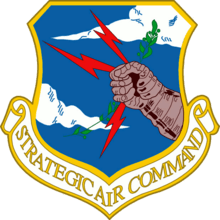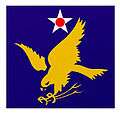448th Supply Chain Management Group
The 448th Supply Chain Management Group is an inactive United States Air Force unit. Its last assignment was to the 448th Fighter-Bomber Wing, stationed at Hensley Field, Texas. It was inactivated on 16 November 1957.
| 448th Supply Chain Management Group | |
|---|---|
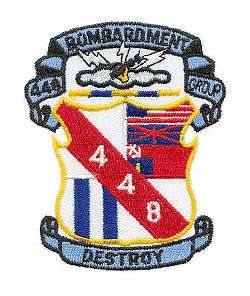 Emblem of the 448th Bombardment Group (World War II) | |
| Active | 1943–1946; 1947–1951; 1955–1957 |
| Country | United States |
| Branch | United States Air Force |
During World War II, its predecessor unit, the 448th Bombardment Group was an Eighth Air Force B-24 Liberator unit in England. Assigned to RAF Seething in late 1943, the group flew its last combat mission on 25 April 1945, attacking a marshalling yard at Salzburg, Austria.
It returned to the United States in July 1945, and was assigned to Second Air Force for B-29 Superfortress conversion and training. The end of the Pacific War canceled the deployment of the group to Okinawa, the unit remaining at McCook Army Airfield, Nebraska, its stage-3 training base when training was complete, then moved to Fort Worth AAF when McCook was closed.
In the postwar era, the 448th Bombardment Group was one of the original ten USAAF bombardment groups assigned to Strategic Air Command on 21 March 1946. The unit was inactivated on 4 August 1946 at Fort Worth, its B-29 aircraft and personnel being reassigned to the senior 92d Bombardment Group which was reactivated due to the Air Force's policy of retaining only low-numbered groups on active duty after the war.
Allocated to the Air Force Reserve as a Tactical Air Command B-26 Invader light bomb group in 1947; activated in 1951 with its personnel and aircraft being reassigned to active duty units in Far East Air Forces for combat in Korea; inactivated immediately afterward. Briefly activated as a fighter-bomber group in the late 1950s, inactivated 1957.
History
- For additional history and lineage, see 448th Fighter-Bomber Wing
World War II
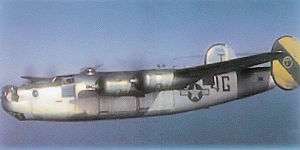
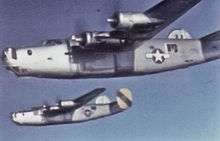
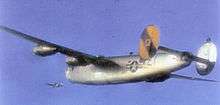
Activated 1 May 1943 at Gowen Field Idaho were initial training was conducted. Then the unit moved to Wendover Field, Utah on the Fourth of July 1943 for the second phase of training, and final training at Sioux City AAB, Iowa from 16 September to early November 1943. The ground unit went to Camp Shanks, New York, and sailed on the Queen Elizabeth on 23 November 1943, and arrived at Clyde on 29 November 1943. The aircraft left Sioux City on 3 November 1943 for Herrington field in Kansas. The aircraft flew for The United Kingdom via the Southern ferry route from Puerto Rico, Trinidad, Belém, Dakar, and Marrakesh. Three aircraft were lost en route. Moved to RAF Seething England, November–December 1943, and assigned to Eighth Air Force. Assigned to the 20th Combat Bombardment Wing. The group tail code was a "Circle-I".
The 448th flew B-24 Liberators as part of the Eighth Air Force's strategic bombing campaign. The group entered combat on 22 December 1943, and until April 1945 served primarily as a strategic bombardment organization, hitting such targets as aircraft factories in Gotha, ball-bearing plants in Berlin, an airfield at Hanau, U-boat facilities at Kiel, a chemical plant at Ludwigshafen, synthetic oil refineries at Pölitz, aircraft engine plants at Rostock, marshalling yards at Cologne, and a Buzz-bomb assembly plant at Fallersleben. The group took part in the intensive campaign of heavy bombers against the German aircraft industry during Big Week, 20–25 February 1944.
In addition to strategic operations, flew interdictory and support missions. Bombed V-weapon sites, airfields, and transportation facilities prior to the Normandy invasion in June 1944, and on D-Day attacked coastal defenses and choke points. Struck enemy positions to assist the Allied offensive at Caen and the breakthrough at Saint-Lô in July. Dropped supplies to airborne troops near Nijmegen during the airborne attack on the Netherlands in September. Bombed transportation and communications centers in the combat zone during the Battle of the Bulge, December 1944 – January 1945. Dropped supplies to troops at Wesel during the airborne assault across the Rhine in March 1945.
The group flew its last combat mission on 25 April, attacking a marshalling yard at Salzburg.
Redeployed to the US June/July 1945. First of the aircraft departed the United Kingdom on mid-June 1945. The ground echelon sailed from Greenock on the Queen Mary on 6 July 1945, arriving in New York on 11 July 1945.
Cold War
Group established at Sioux Falls AAFd, South Dakota where the Group was trained as a B-29 unit under Second Air Force. On 6 May 1946 the 715 Bomb Squadron was reassigned to the 509th Bomb Group. Inactivated in August 1946 at Fort Worth AAF, Texas and its mission, personnel, and equipment were transferred to the 92d Bombardment Group.
Reactivated in April 1947 as a reserve Tactical Air Command Fighter-Bomber unit at Long Beach Airport, California. Most personnel called up to active duty during the Korean War and assigned to other units. Inactivated March 1951. Reactivated as a reserve F-86 fighter bomber group in 1955 at Dallas NAS (Hensley Field). Inactivated 1957
Lineage

- Constituted as the 448th Bombardment Group (Heavy) on 6 April 1943
- Activated on 1 May 1943
- Redesignated 448th Bombardment Group, Heavy on 20 August 1943
- Redesignated 448th Bombardment Group, Very Heavy on 5 August 1945
- Inactivated on 4 August 1946
- Allotted to the reserve and activated on 19 April 1947
- Redesignated 448th Bombardment Group, Light on 27 June 1949
- Ordered to active duty on 17 March 1951
- Inactivated on 21 March 1951
- Redesignated 448th Fighter-Bomber Group and allotted to the reserve on 12 April 1955
- Activated on 18 May 1955
- Inactivated on 16 November 1957
- Redesignated 448th Tactical Fighter Group on 31 July 1985[1] (remained inactive)
- Redesignated 448th Eagle Propulsion Sustainment Group
- Activated on 18 February 2005
- Redesignated 448th Combat Sustainment Group on 14 April 2006
- Redesignated 448th Supply Chain Management Group on 1 April 2008
- Inactivated on 30 June 2010
Assignments
|
|
Components
- 540th Combat Sustainment Squadron, 14 April 2006 – 28 April 2008
- 541st Combat Sustainment Squadron, 14 April 2006 – 28 April 2008
- 542d Combat Sustainment Squadron, 14 April 2006 – 28 April 2008
- 546th Combat Sustainment Squadron, unknown – 28 April 2008
- 711th Bombardment (later Fighter-Bomber) Squadron: 27 June 1949 – 21 March 1951; 18 May 1955 – 16 November 1957
- 712th Bombardment Squadron: 1 May 1943 – 4 August 1946; 19 April 1947 – 21 March 1951
- 713th Bombardment (later Fighter-Bomber) Squadron: 1 May 1943 – 4 August 1946; 19 April 1947 – 21 March 1951; 18 May 1955 – 16 November 1957
- 714th Bombardment Squadron: 1 May 1943 – 4 August 1946; 19 April 1947 – 21 March 1951
- 715th Bombardment Squadron: 1 May 1943 – 4 August 1946
Stations
|
|
Aircraft assigned
- Consolidated B-24 Liberator (1943–1946)
- Douglas B-26 Invader (1949–1951)
- Lockheed F-80 Shooting Star (1955–1957)
- North American F-86 Sabre (1957)
References
![]()
- Department of the Air Force/MPM Letter 648q, 31 July 1985, Subject: Reconstitution, Redesignation, and Consolidation of Selected Air Force Organizations
- Brett, Jeffrey E. The 448th Bomb Group(H): Liberators over Germany in World War II. Atglen, Pennsylvania: Schiffer Publishing, 2002. ISBN 0-7643-1464-5.
- Freeman, Roger A. Airfields of the Eighth: Then and Now. After the Battle, 1978. ISBN 0-900913-09-6.
- Freeman, Roger A. The Mighty Eighth: The Colour Record. Cassell & Co., 1991 ISBN 0-304-35708-1.
- Maurer, Maurer, ed. (1983) [1961]. Air Force Combat Units of World War II (PDF) (reprint ed.). Washington, DC: Office of Air Force History. ISBN 0-912799-02-1. LCCN 61060979.
- Maurer, Maurer, ed. (1982) [1969]. Combat Squadrons of the Air Force, World War II (PDF) (reprint ed.). Washington, DC: Office of Air Force History. ISBN 0-405-12194-6. LCCN 70605402. OCLC 72556.
- Ravenstein, Charles A. (1984). Air Force Combat Wings, Lineage & Honors Histories 1947–1977. Washington, DC: Office of Air Force History. ISBN 0-912799-12-9.
